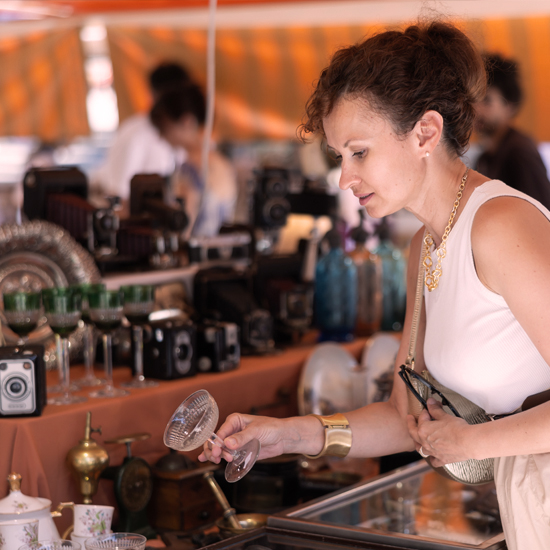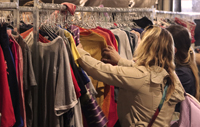
Whether you’re hunting for a one-of-a-kind vintage dress or that perfect mid-century modern chair, vintage shopping is more popular than ever. With the second-hand market booming and younger generations leading the charge toward sustainable fashion, there’s never been a better time to explore the world of vintage finds.
But let’s be honest — vintage shopping can feel overwhelming if you don’t know what to look for. How do you spot authentic pieces?
What should you avoid? Here’s your guide to becoming a savvy vintage shopper:
- Start with authentication and quality
Before you fall in love with that “vintage” band tee, take a moment to verify its authenticity. Check for vintage clothing labels and understand their dating systems – genuine vintage pieces often have union labels that are typically square. Look for even, sturdy stitching and hardware that’s consistent with the era. If something claims to be vintage but looks suspiciously new or has modern-style labels, it might just be “vintage-inspired.”
For furniture, examine the construction quality and look for maker’s marks or stamps that can help date the piece. Real vintage furniture often shows signs of age that add character, not detract from it.
- Start with authentication and quality
- Master the sizing game
Here’s where many vintage shoppers stumble: sizing has changed dramatically over the decades. A size 10 from the 1980s won’t necessarily match today’s size 10. Always check exact measurements rather than relying on size labels, and bring a measuring tape when shopping in person. Take measurements of the well-fitting pieces you love at home for comparison — this simple step will save you from costly mistakes.
- Master the sizing game
- Shop smart with your budget
Set a realistic budget before you start browsing, and don’t forget to factor in potential alteration costs. That perfect vintage blazer might need the sleeves shortened or the waist taken in. Compare prices across different platforms and stores — what costs $200 at a curated vintage boutique might be $20 at your local thrift store.
- Shop smart with your budget
- Where to find the best pieces
Don’t overlook your local thrift stores and consignment shops — they’re goldmines for budget-friendly finds. For higher-end pieces, consider authenticated online platforms that guarantee quality. Estate sales and flea markets may also have amazing discoveries, but bring cash and be prepared to negotiate
- Where to find the best pieces
- Avoid common pitfalls
Never buy something just because it’s labeled vintage without checking authenticity. Don’t purchase items that are too small hoping alterations will make them work — major size changes rarely turn out well. And resist the urge to buy pieces you won’t actually wear just because they’re unique or cheap.
- Avoid common pitfalls
Remember, vintage shopping is about finding pieces that reflect your personal style while making environmentally conscious choices. Take your time, do your research, and enjoy the thrill of the hunt. The perfect vintage find is worth the patience it takes to discover it.
What’s your best vintage shopping tip or most amazing find? Share your vintage shopping experiences with the Shop Talk community!

Did you know? Thrift store savings
According to recent research, thrift store shoppers save an average of $1,760 per year by purchasing second-hand instead of new items. Plus, buying a used piece of clothing instead of new reduces its carbon footprint by 82% on average — so you’re helping your wallet and the planet!

okay
Thrifting is fun and you never know what you will find. I found a beautiful Longchamp burgundy backpack purse for only $15. This bag was perfect and authentic too. It values brand new to $350-$800 dollars depending on where you buy them. Thrifting is a great way to decrease carbon footprint.
I know one thing that I use when thrifting. I do carry a tape measure with me at all times, but I also use my sewing skills to help me when selecting items. I have done personal sewing for myself and others over the years. I am familiar with pattern size charts and am aware of the sizing changes that have taken place over the years. When I am interested in an item, I will measure and compare the information against the size charts from patterns that I use along with my body measurements. It sure is helpful to measure and compare before making a purchase.
Interesting information! Thank you for sharing it!
we have been thrifting for many years but I learned something new reading this info. great article.